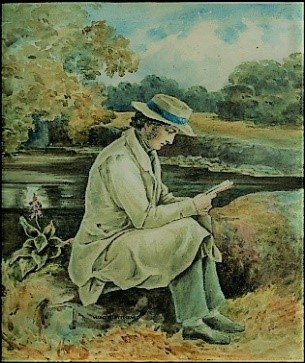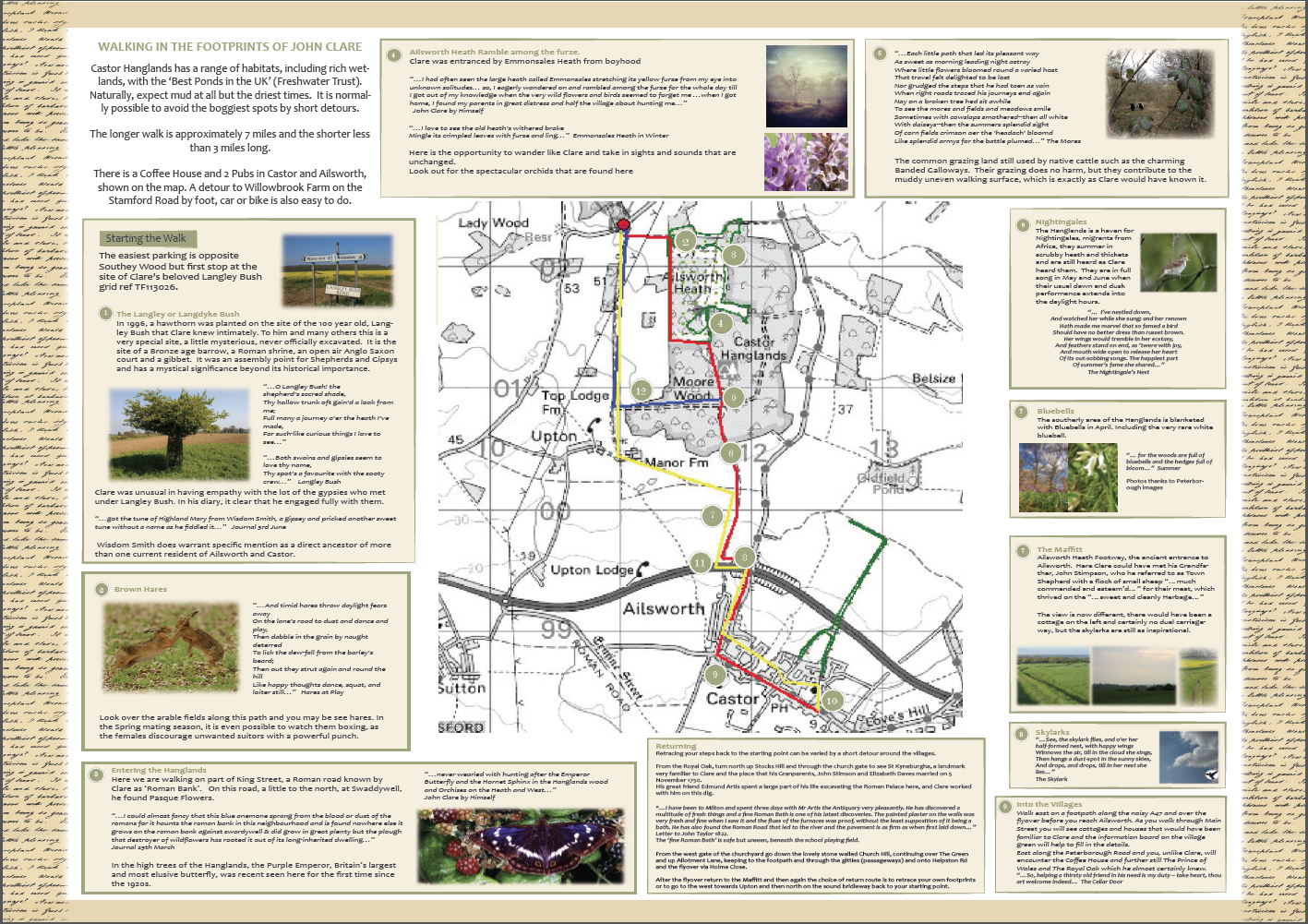John Clare (1793 – 1864) is best known as a poet, but was also folk musician and folk song collector. He lived in the Peterborough area.
The countryside around the area where Clare lived is now being threatened by a huge housing develpment and the organisation Protect Rural Peterborough is attempted to fight this development.
I have been sent this article by this group.
 John Clare, the peasant poet, was born, grew up and roamed the wide common lands around his home in Helpston, west of Peterborough and east of Stamford. His extraordinary curiosity and empathy reached wider and deeper than others. He felt living things, quivering with fearful birds, and absorbed the spiritual significance of places. Pasque flowers spoke to him of the blood and dust of the Romans on King Street and Langley Bush drew him magnetically.
John Clare, the peasant poet, was born, grew up and roamed the wide common lands around his home in Helpston, west of Peterborough and east of Stamford. His extraordinary curiosity and empathy reached wider and deeper than others. He felt living things, quivering with fearful birds, and absorbed the spiritual significance of places. Pasque flowers spoke to him of the blood and dust of the Romans on King Street and Langley Bush drew him magnetically.
Langley Bush was an ancient tree growing near a Bronze age barrow, a Roman shrine, an Anglo Saxon court and gibbet. A gathering place for shepherds '...swains and gipsies...' and John Clare, a village fiddler. He thrived on the 'round of merriment' dancing, drinking and scraping his fiddle with renowned musicians amongst the 'Smith gang of Gypsies' . Clare collected folk songs and tunes from all around him, some written but many simply heard and transcribed. In his Journal he notes that he '...got the tune of Highland Mary from Wisdom Smith and picked another sweet tune without a name as he fiddled it...' Wisdom Smith was a patriarch of a large family, whose descendants live on in John Clare's beloved countryside.
Clare's sensitivity was his gift and his curse. He didn't just love his natural surroundings, he was connected to nature so deeply that he suffered when it was destroyed by Enclosure. The pain and anger in many of his poems like 'The Mores' and 'Remembrances' and viscerally in 'The Lament of Swordy Well' as greedy landowners '...turned my old green hills about and pickt my very bones...'
Today there is another painful struggle over the heart of John Clare Countryside. A nationally important, generational opportunity exists to create a vision of landscape wide rewilding connecting the rivers Nene and Welland from Peterborough to Stamford. This would enable wildlife in all its forms to move over a hundred and fifty square miles. Twenty-one villages and SSSIs, local landowners, local councillors, nationally renowned archaeologists, botanists, DEFRA and all the regional wildlife charities have been working together for many years to help recreate the countryside that Clare would have known. HOWEVER, sixty years ago Homes England bought the critical southern part, for Peterborough New Town. Four times the site has been refused and removed from the plan, once by Government, as unnecessary and in the wrong place, 5 miles from the city. If their fifth attempt succeeds up to 7000 houses, warehousing and industry could destroy the John Clare's countryside, for a second time, unless we can stop it.
The group has produced this route plan: Walking in John Clare's footsteps:

There is a lot more information about Clare on Wikipedia, of which this is an extract:
Clare's father was, according to Clare, a 'noted singer', and Clare himself played the fiddle and collected folk songs and tunes.[49] Regarding his fiddle-playing ability, he described himself as "a decent scraper",[50] and collected over two hundred folk tunes in two books, the Northampton Manuscripts Nos. 12 and 13.[51]
As well as collecting folk tunes, Clare also collected many folk songs which are recorded in the Northampton Manuscript No. 18, and the Peterborough Manuscripts B4 and B7. According to George Deacon,[49] the Northampton Manuscript No. 18 contains "more polished and refined versions" of songs which were originally written up in a rougher form in the two Peterborough Manuscripts, B4 and B7. Deacon's research led him to view the two Peterborough manuscripts as more authentic, inasmuch as they showed, "less conscious interference from the poet in Clare" than the versions of the songs in the Northampton manuscript.[49]
 John Clare, the peasant poet, was born, grew up and roamed the wide common lands around his home in Helpston, west of Peterborough and east of Stamford. His extraordinary curiosity and empathy reached wider and deeper than others. He felt living things, quivering with fearful birds, and absorbed the spiritual significance of places. Pasque flowers spoke to him of the blood and dust of the Romans on King Street and Langley Bush drew him magnetically.
John Clare, the peasant poet, was born, grew up and roamed the wide common lands around his home in Helpston, west of Peterborough and east of Stamford. His extraordinary curiosity and empathy reached wider and deeper than others. He felt living things, quivering with fearful birds, and absorbed the spiritual significance of places. Pasque flowers spoke to him of the blood and dust of the Romans on King Street and Langley Bush drew him magnetically. 

